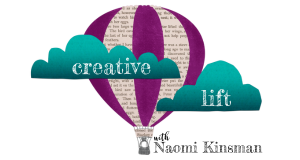Today, let’s explore the Writerly Play Attic.
As a reminder, the Attic is one of five mental spaces in the creative landscape of Writerly Play. Like corners in elementary classrooms, these spaces help us focus on the task at hand–in our case, thinking tasks. We can fill these spaces with supplies and checklists, but the way each space feels matters most. A book corner feels different than a science corner. Beanbags and bookshelves invite our cozy, quiet selves out to play, while test tubes and lab glasses speak more to our curious, analytical selves.
In the Writerly Play Attic, you’re invited to think reflectively—collecting ideas, asking questions, and discovering personal connections.
If you’re joining this series mid-stream and wondering what in the world Writerly Play is, you might find it helpful to check out the first two posts.
What kind of staircase did you use to climb up into the Attic yesterday? A ladder? A spiral staircase? A rope ladder? What kind of ladder would invite your quiet, mindful, reflective self out to play? If you need to revise your entryway, make the necessary changes. Then, picture yourself climbing up into your space.
Look around. What can you already picture in your Writerly Play Attic?
Do you have a window seat next to a thick, paned window? A Narnia wardrobe stuffed full of familiar and forgotten items? Maybe you have a yoga mat, a writing desk, wind chimes, scented candles, or twinkle lights.
Remember: we’re creating a space with a specific feel–for YOU. There is no right-and-wrong rulebook for items you’re allowed to keep in your Attic. We wouldn’t tell students not to keep how-to books in the science corner because books belong in the reading corner. In the same way, try not to issue unhelpful rules in your mental spaces. If you could use an easel and paints in every one of your spaces, by all means, scatter those easels around.
Actually, this point of potential confusion takes us straight to the heart of what the Writerly Play rooms are meant to do. If painting is sometimes a way for you to reflect, and other times a way for you to brainstorm, and other times is a way for you to collaborate, it’s possible that sometimes your brain is trying to do all three at the same time when you pick up your paintbrush.
Surrounding your Attic easel with photographs, keepsakes, and a quiet, peaceful environment will cue your mind to focus and pursue Attic types of questions.
What matters to me in this piece?
What past experiences might inform this project?
What physical or mental clutter is in my way, and how might I clear a new path?
The more you engage with Attic thinking, the stronger your personal, mindful, reflective set of creativity skills will be.
The core skills in the Writerly Play Attic include:
- Clearing Clutter
- Collecting Ideas
- Sorting Ideas
- Asking Questions
- Finding the Heart
- Clarifying Goals
In order to play to your strengths while thinking in these ways, what tools, strategies or supplies ought to be in your Attic? You may have some tried-and-true ones you can add right now. You might also have a wish list. What else might stretch you in new directions, or take you deeper into your work?
Is your mind filling with ideas and questions? And if so, where should you start?
These are mental spaces, but making them tangible will strengthen their helpfulness in your creative process.
You might:
-
Use a shoe box to collect your Writerly Play tools. Inside, separate out the items for each room in smaller boxes or bags.
-
Create a collage or mind map for each room.
-
Design a set of cards for each room with strategies, reminders, checklists and quotes.
-
Or, if you only have three minutes right now, create a new list in your favorite note-taking tool, and do a quick brain dump. As far as the Attic goes, what tools do you have? What tools do you need?
I treat my wish list as a scavenger hunt, and invite you to do the same. You’ll find that ideas you tried in the past are newly useful as you start to organize them into specific workflows (or, thinking flows). You’ll see when you have an overwhelming amount of tools for one task and none for another. Maybe it’s time to weed tired ideas out. Or maybe you’d enjoy cycling through strategies like you do with summer and winter clothes.
Possibilities are everywhere–in creativity books, on podcasts, on Pinterest. You probably won’t be surprised to find that strategies and tools for the rooms are also a regular feature on this blog. If you’re curious, check out the most recent Attic tools I’ve personally explored here.
Tomorrow, in The Nuts and Bolts of Writerly Play, we’re headed to the Studio. Until then, here’s to you and your creativity.

